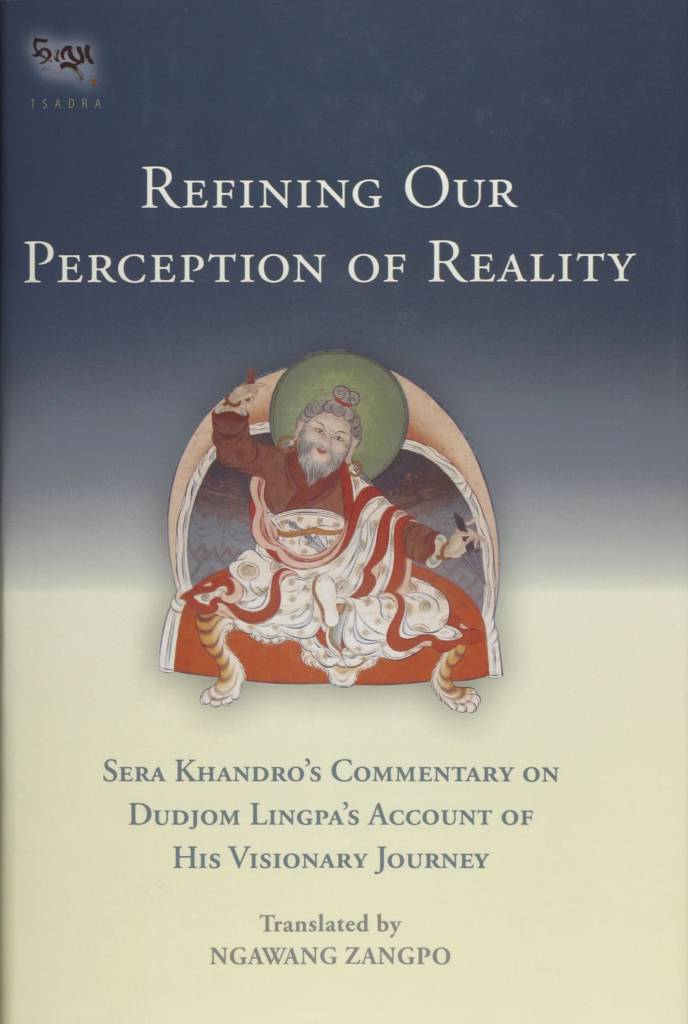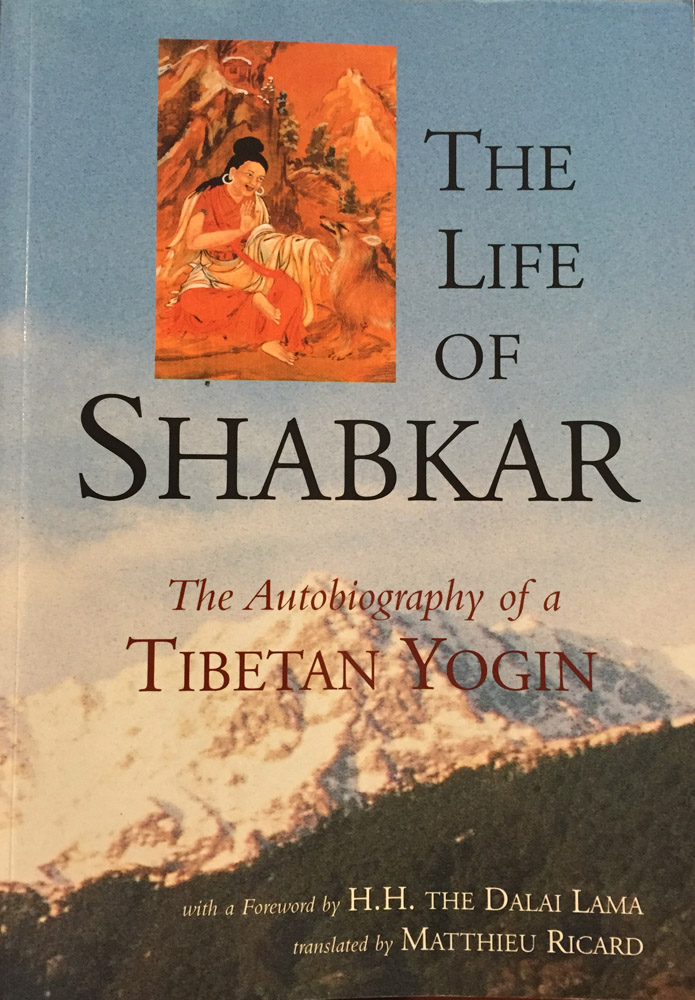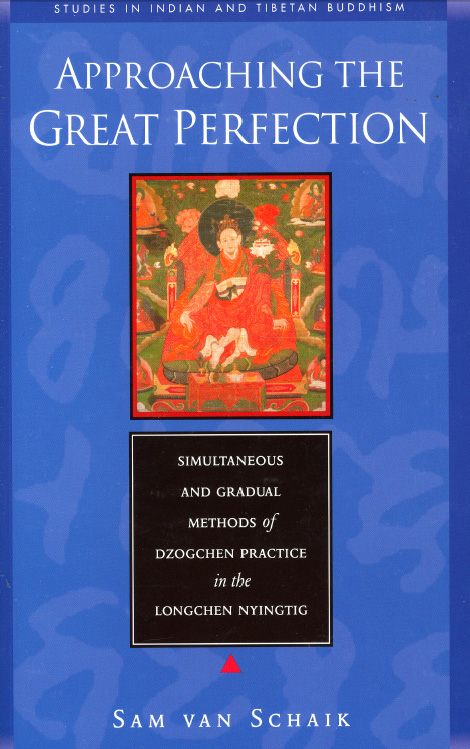Mahāmudrā and Buddha-Nature
Watch & Learn
In English with his direct, characteristic humor, Khenpo Rinpoche presents the "shining star" of buddha-nature in the minds of sentient beings as the same nature as the buddhas. He says, "We are always guided by this nature all the time whether we realize it or not."
From the Masters
Gampopa
As told by Gö Lotsāwa Zhönu Pal:
- དེ་ཡང་དྭགས་པོ་རིན་པོ་ཆེས་དཔལ་ཕག་མོ་གྲུ་པ་ལ། འོ་སྐོལ་གྱི་ཕྱག་རྒྱ་ཆེན་པོ་འདིའི་གཞུང་ནི་བཅོམ་ལྡན་འདས་བྱམས་པས་མཛད་པའི་ཐེག་པ་ཆེན་པོ་རྒྱུད་བླ་མའི་བསྟན་བཅོས་འདི་ཡིན་ཞེས་གསུངས་ཤིང་། དཔལ་ཕག་མོ་གྲུ་པས་ཀྱང་རྗེ་འབྲི་ཁུང་པ་ལ་དེ་སྐད་དུ་གསུངས་པས། རྗེ་འབྲི་ཁུང་པ་དཔོན་སློབ་ཀྱི་གསུང་རབ་རྣམས་སུ་ཐེག་པ་ཆེན་པོ་རྒྱུད་བླ་མའི་བཤད་པ་མང་དུ་འབྱུང་བ་དེ་ཡིན་ནོ།
~ 'gos lo tsA ba gzhon nu dpal. Deb ther sngon po, Vol. 2: p. 847. Chengdu: Si khron mi rigs dpe skrun khang, 1984.
As quoted by Śākya Chokden:
- དེ་ཡང་སྒམ་པོ་པས་གསུངས་པ། ང་ཡི་ཕྱག་རྒྱ་ཆེན་པོ་ཡི། ངོས་འཛིན་རང་གི་རིག་པ་སྟེ། གཞུང་ནི་རྒྱུད་བླའི་བསྟན་བཅོས་ཞེས།
- In that regard Gampopa says, “the hallmark of my Mahāmudrā is self-awareness and its scriptural source is the Uttaratantraśāstra”.
~ shAkya mchog ldan. gzhan blo’i dregs pa nyams byed in gsung 'bum. (Sachen International: Kathmandu, 2006), Vol. 17: p. 364.
Translation adapted from Higgins, David and Martina Draszczyk. Mahāmudrā and the Middle Way: Post-Classical Kagyü Discourses on Mind, Emptiness and Buddha-Nature (Wien, 2016). Vol. 2: p. 17.
Further Readings
[Dzogchen Explained]
The key to ascending through the eight phases [of Dzogchen practice] is to appreciate and settle into the Dzogchen perspective on reality, according to which the fundamental nature of ourselves—and the cosmos—is our inner pristine awareness (rikpa), also described by terms such as buddhanature, the dharma-body of a buddha, or pure, absolute space.
[...]
Dzogchen asserts, with other Mahayana traditions, not only that we all have within us the capacity to become fully enlightened buddhas but also that in some sense we already are buddhas, in that pristine awareness is the fundamental nature of ourselves and the world simply waiting to be rediscovered. This sort of "gospel of buddhanature," running counter to the "tragic sense of life" influential in traditional European culture, is more appealing to many Western seekers, accustomed as they are to the psychological lingo of self-improvement, than are accounts of Buddhism that dwell on our delusion and the sufferings they incite and emphasize that attaining enlightenment is a process requiring years, and perhaps lifetimes, of effort.
[Finding Rest in the Nature of Mind]
The sutras of definitive meaning belonging to the final turning of the wheel of the Dharma clearly reveal the great secret of all the Buddhas just as it is. These sutras are the Dhāraṇīśvararājaparipṛcchā-sūtra, the Śrīmālādevīsiṃhanādaparipṛcchā-sūtra, the Ratnadārikāparipṛcchā-sūtra, the Vimaladevīparipṛcchā-sūtra, the Aṅgulimālīya-sūtra, the Mahāparinirvāṇa-sūtra, the Maitreya-paripṛcchā-sūtra, and the Tathāgatagarbha-sūtra. These sutras teach that the dharmadhātu, that is, the intrinsically pure nature of the mind or buddha-element (khams), the essence of the Tathāgatas (the tathāgatagarbha), is primordially present in all beings. It is present from the very beginning and it is unchanging. Spontaneously, and from the very first, its appearing aspect is the source of the major and minor marks of the rūpakāya (the body of form); and its emptiness aspect is the dharmakāya (the body of ultimate reality) beyond all conceptual extremes. Since all enlightened qualities are naturally present within it, it is like a jewel; since it is unchanging, it is like space; and since it pervades all beings, as if moistening them, it is like water. By means of all such metaphors the tathāgatagarbha is set forth.
[Refining Our Perception of Reality]
The main presentation of pervasive insubstantial evenness has three parts: pervasive insubstantial evenness of the ground of being, of the spiritual path, and of the result.
First, the ground of being is the nature of mind endowed with buddha nature. Before sentient beings became deluded, no faults, defilements, or habitual patterns whatsoever stained them. Thus, this is the pervasive insubstantial evenness of the ground of being.
Second, during the circumstance of sentient beings’ delusion, that delusion’s power prevents them from seeing the characteristics of the ground of their being. Nevertheless, the nature of that ground is pure; the fact that that enlightenment’s supreme bodies and wisdoms naturally dwell there is the pervasive insubstantial evenness of the spiritual path.
Third, at the time of final enlightenment, the ground of being (the lord that no faults, defilements, or habitual patterns have ever stained since primordial time) becomes manifest, without the addition of any new qualities. For instance, the sun’s essence during three circumstances—before clouds cover it, during its covering, and once it is free from clouds—has no change whatsoever, positive or negative. Lord Bodhisattva Maitreya states:
- As it was before, so it is later:
- it is the changeless nature.
[The Life of Shabkar]
"Pure vision," the extraordinary outlook of the Vajrayana or Adamantine Vehicle, is to recognize Buddha-nature in all sentient beings and to see primordial purity and perfection in all phenomena. Every sentient being is endowed with the essence of Buddhahood, just as oil pervades every sesame seed. Ignorance is nothing more than lack of awareness of this very Buddha-nature, as when a pauper does not see the golden pot buried beneath his own hut. The spiritual path is thus a rediscovery of this forgotten nature, just as one sees again the immutable brilliance of the sun once the clouds that were masking it have been blown away.
~ Translator's Introduction, pg. xvii
The Vajrayana path is based on pure perception and is motivated by the aspiration to free swiftly oneself and others from delusion through skillful means. The Mahayana chiefly considers that the Buddha nature is present in every sentient being like a seed, or potentiality. The Vajrayana considers that this nature is fully present as wisdom or pristine awareness, the undeluded aspect and fundamental nature of the mind. Therefore, while the former vehicles are known as "causal vehicles," the Vajrayana is known as the "resultant vehicle." As it is said, "In the causal vehicles one recognizes the nature of mind as the cause of Buddhahood; in the resultant vehicle one regards the nature of mind as Buddhahood itself." Since the "result" of the path, Buddha hood, is primordially present, one only needs to actualize it or divest it of its veils.
~ pg. 551
The fruit of the Great Perfection
Is primordially present as the Buddha nature.
It does not need to be obtained:
It is ripe within oneself.
~ pg. 554
[Grounds of Buddha-Nature in Tibet]
The distinction that Śākya Chokden makes between two types of self-awareness reflects the distinction Longchenpa made between self-awareness (rang rig) in Yogācāra (or "Mind-Only") and the gnosis of self-awareness (so sor rang rig pa'i ye shes) in the Great Perfection (rdzogs chen). Longchenpa's distinction between the basic consciousness (kun gzhi) and the Truth Body (chos sku) similarly conveys this fundamental difference between distorted and undistorted worlds. In fact, Longchenpa distinguished his view of the Great Perfection from that of "Mind-Only" in terms of buddha-nature, expressed as the "basic element" (khams):
- Proponents of Mind-Only assert a changeless permanence and mere [ordinary] awareness as self-illuminating, but this position differs because we assert the unconditioned spontaneous presence beyond permanence and annihilation, and the spontaneously present qualities of the basic element."
[Approaching the Great Perfection]
The conflict between immanence and distinction is present within the scriptural texts of the Seminal Heart, from the Seventeen Tantras down to the Longchen Nyingtig's treasure texts. And it is in the Longchen Nyingtig's treasure texts themselves that some attempt to reconcile that conflict can be detected in the frequent appearance of the buddha nature model.






